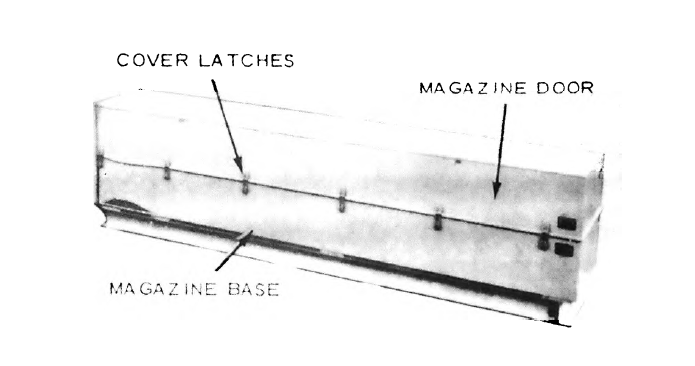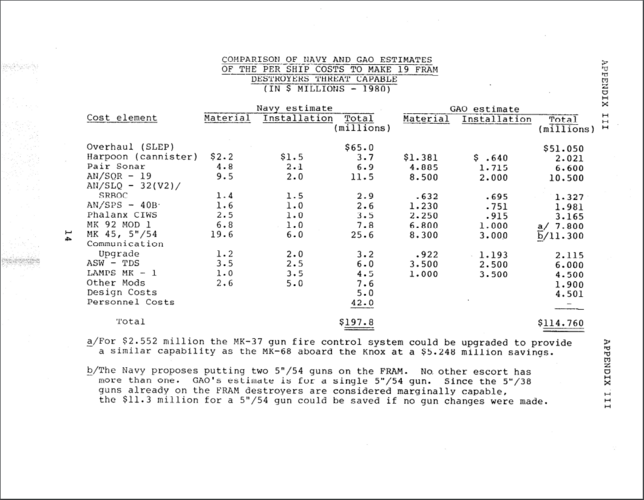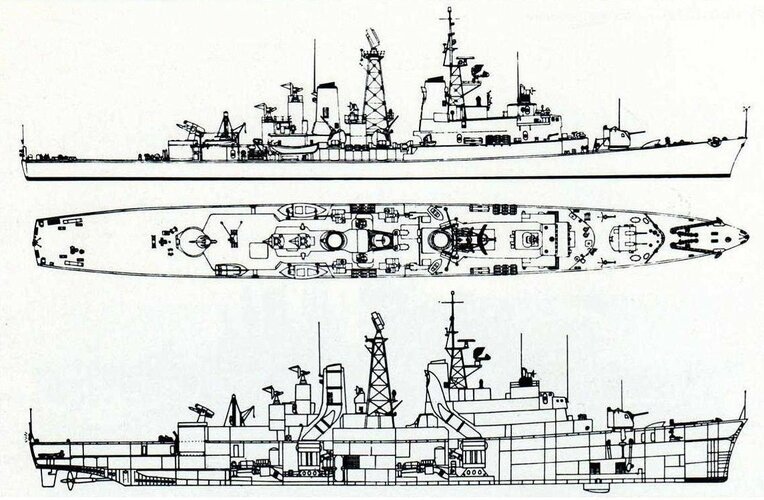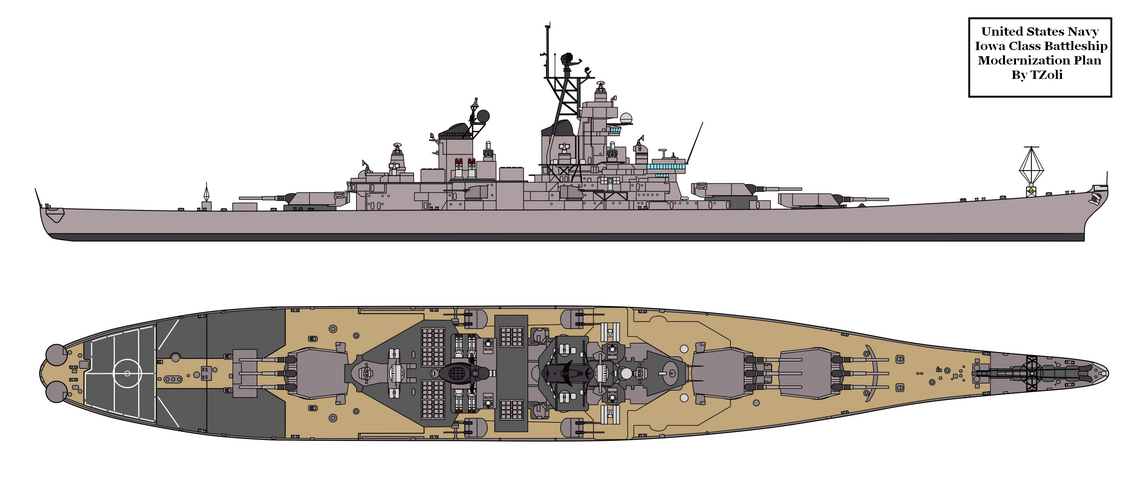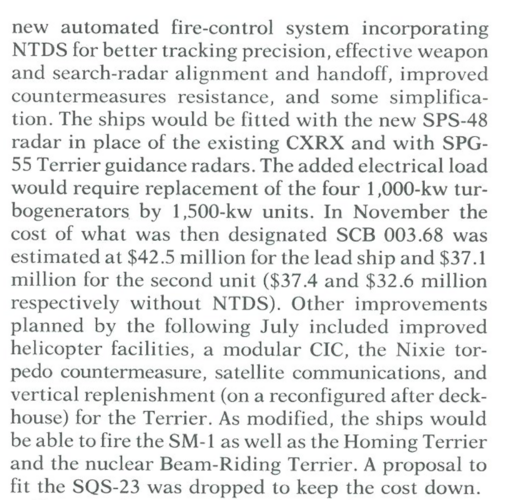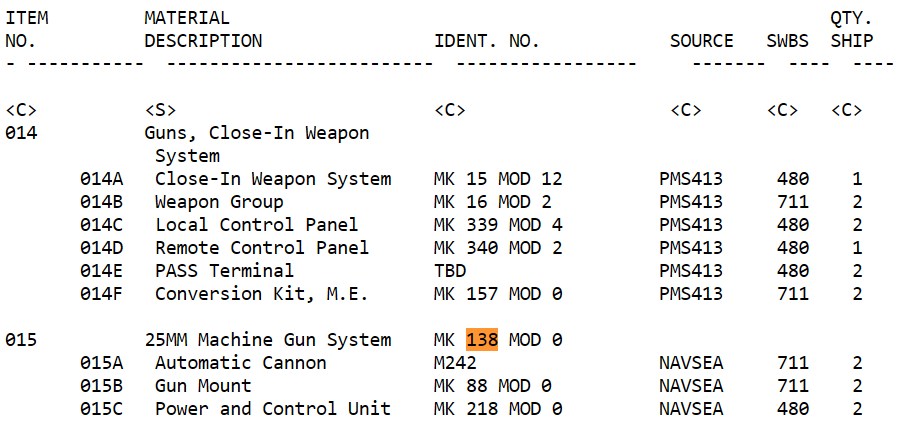I've thought I collect here the Guided Missile Launcher Systems or GMLS designations the US Armed forces used, mostly the navy but there seems to be many missing launcher designations and sequences.
If anybody knows more designations from the missing sequences feel free to post here or inform me and I've extend the list.
Here they are:
Mark 1 - Twin arm test launcher for the RIM-2 Terrier on the USS Mississippi
Mark 2 - Twin? arm test launcher and system for the RIM-2 Terrier
Mark 3 - Twin? arm test launcher and system for the RIM-2 Terrier
Mark 4 - Twin arm launcher for the RIM-2 Terrier used on the Boston class (Vertically loaded)
Mark 5 - Twin arm land based test launcher for RIM-2 Terrier, RIM-24 Tartar and RIM-66 and 67 Standard MR/ER used on the USS Desert Ship
Mark 6 - Unknown
Mark 7 - Twin arm launcher for the RIM-8 Talos used on the Galveston class (Above deck storage and horizontally loaded)
Mark 8 - Twin arm launcher for the RIM-2 Terrier used on the USS Gyatt (Above deck storage and horizontally loaded)
Mark 9 - Twin arm launcher for the RIM-2 Terrier used on the Providence class (Above deck storage and horizontally loaded)
Mark 10 - Twin arm launcher for the RIM-2 Terrier and RIM-67 Standard ER (Below deck storage and horizontally loaded)
Mark 11 - Twin arm launcher for the RIM-24 Tartar and RIM-66 Standard MR (Vertically loaded)
Mark 12 - Twin arm launcher for the RIM-8 Talos used on the USS Long Beach (Below deck storage and horizontally loaded)
Mark 13 - Single arm launcher for the RIM-24 Tartar, RIM-66 Standard MR and RGM-84 Harpoon (Vertically loaded)
Mark 14 - Single arm launcher for the RIM-55 Typhon MR (Vertical loaded) (One artist impression shows the launcher as an inverted Mark 13, eg the missile was held above the rail and not under it)
Mark 15 - 1/2-tube test launcher system for the RGM/UGM-27 Polaris
Mark 16 - 8 cell "Pepper Box" launcher for the RUR-5 ASROC and RGM-84 Harpoon (During development 2 cell and 12 cell versions were considered for the RAT and ASROC)
Mark 17 - 8/16-tube launcher system for the UGM-27 Polaris used on submarines
Mark 18-20 - Unknown
Mark 21 - 8/16-tube launcher system for the UGM-27C Polaris A-3 used on submarines
Mark 22 - Single arm launcher for the RIM-24 Tartar, RIM-66 Standard MR and RGM-84 Harpoon (Vertical loaded, Modified Mark 13)
Mark 23- Unknown
Mark 24 - 16-tube launcher system for the UGM-73 Poseidon used on submarines
Mark 25 - 8-cell (2-4-2) launcher for the RIM-7 Sea Sparrow / BPDMS (Horizontally manually loaded)
Mark 26 - Twin arm launcher for the RIM-66 Standard MR, RGM-84 Harpoon and RUR-5 ASROC (Vertical loaded)
Mark 27 - 1/2-tube launcher system for the Zuni Chaffroc system
Mark 28 - 1/2-tube launcher system for the Zuni Chaffroc system
Mark 29 - 8-cell (4-4) launcher for the RIM-7 NATO Sea Sparrow and RIM-162 Evolved Sea Sparrow (Horizontally manually loaded)
Mark 30 - 6-rail launcher for 5" Shore Bombardment Rocket used on the LSM(R) Class (Horizontally loaded)
Mark 31 - Unknown
Mark 32 - 1/2/4-cell launchers for the RIM-66 Standard MR used on sold Iranian and Taiwanese Ex USN Ships (Horizontally automatically loaded)
Mark 33 - 1/2-tube launcher system for 112mm Chaffroc system
Mark 34 - 2-tube launcher system for 112mm Chaffroc system used on the Pegasus class hydrofoils
Mark 35 - 16-tube launcher system for the UGM-96 Trident used on submarines
Mark 36 - 4-rail launcher for 5" Shore Bombardment Rocket used on the LSM(R) Class (Horizontally loaded)
Mark 37 - single-tube/rail launcher for the Mark 60 Mark 60 CAPTOR (Encapsulated Torpedo) used on surface ships
Mark 38 - single-tube/rail launcher for the Mark 60 Mark 60 CAPTOR (Encapsulated Torpedo) used on P-3 Orion aircraft
Mark 39 - single-tube/rail launcher for the Mark 60 Mark 60 CAPTOR (Encapsulated Torpedo) used on submarines
Mark 40 - Unknown
Mark 41 - Modular (8/16/32/40/61/64) Vertical Launch System for a large number of missile types (Vertically loaded)
Mark 42 - Unknown
Mark 43 - 24-cell launcher on an improved or modified SeaRAM/Phalanx Chassis for the RIM-116 Rolling Airframe Missile (Horizontally manually loaded)
Mark 44 - 4-cell/tube "Armoured Box" launcher for the BGM-109 Tomahawk (Horizontally manually loaded) (Re-designation?)
Mark 45 - Vertical Launch System for the UGM-84 Harpoon and UGM-109 Tomahawk used on submarines (Vertically loaded)
Mark 46-47 - Unknown
Mark 48 - Modular (2-4/6-12/16-32) Vertical Launch System for the RIM-7 VL Sea Sparrow and the RIM-162 Evolved Sea Sparrow (Vertically loaded)
Mark 49 - 21-cell launcher for the RIM-116 Rolling Airframe Missile (Horizontally manually loaded, there is also the SeaRAM a modified Mark 15 Phalanx mounting with a 11 cell launcher instead of the Gatling gun)
Mark 50 - 8-tube launcher for 5" Shore Bombardment Rocket used on PT Boats (Horizontally loaded)
Mark 51-52 - Unknown
Mark 53 - 2-4-cell launcher for the Nulka anti-missile decoy (Horizontally/Vertically manually loaded)
Mark 54-55 - Unknown
Mark 56 - Modular (4/12/32) Vertical Launch System for the RIM-162 Evolved Sea Sparrow (Vertically loaded)
Mark 57 - 20-cell Peripheral Vertical Launch System for the RIM-162 Evolved Sea Sparrow, RGM-109 Tomahawk and RUM-139 VL-ASROC used on the Zumwalt class (Vertically loaded)
Mark 58-69 - Unknown
Mark 70 - 1-4-cell (2x2) Canister/Vertical Launch System for a large number of missile types, looks like simplified and modified Mark 41 (Vertically or Horizontally loaded)
Mark 71-86 - Unknown
Mark 87 - 4-cell (2x2) launcher for the RGM-84 Naval Strike Missile (Horizontally manually loaded)
Mark 88-101 - Unknown
Mark 102 - Twin launcher for 5" Shore Bombardment Rocket, designed for use on LSMR (Vertically loaded)
Mark 103-104 - Unknown
Mark 105 - Twin launcher for 5" Shore Bombardment Rocket used at least on the USS Carronade (Vertically loaded)
Mark 106-107 - Unknown
Mark 108 - Single launcher for RUR-4 Weapon Alpha (Vertically loaded)
Mark 109-131 - Unknown
Mark 132 - Modified Mark 29 8-cell launcher for Combined 6x RIM-7 NATO Sea Sparrow and 10x (2x5) RIM-116 Rolling Airframe Missiles (Horizontally manually loaded)
Mark 133-140 - Unknown
Mark 141 - 4-cell/tube launcher for the RGM-84 Harpoon (Horizontally manually loaded)
Mark 142 - Unknown
Mark 143 - 4-cell/tube "Armoured Box" launcher for the BGM-109 Tomahawk (Horizontally manually loaded)
Mark 144 - 21-cell launcher for the RIM-116 Rolling Airframe Missile (Horizontally manually loaded)
Note:
Not sure if there are visual differences between the Mark 7 and 12, Mark 9 and 10 as well as the Mark 13 and 14 launchers.
There is a system called the RAM Mark 31 Guided Missile Weapon System (GMWS) Which might be the full designation of the system and contains the Mark 144 launcher
OK, so I've been digging around all night and there's four major designation sequences for shipboard launch systems, and separate ones for aircraft.
The first and oldest one is for shipboard rocket launchers. Most of these are for bombardment rockets, and they appear to have been given out in blocks due to how they're sorted - most of the 4.5-inch systems first, then a later on all of the 3.0 inch systems in one go, with gaps in between that may be unallocated entirely. Especially prominent with the jump from 52 to 70, and then the skip from there.
Mark 1: 4.5-inch rocket launcher for landing fire support, 12 guides
Mark 2: 4.5-inch rocket launcher for landing fire support, 3 guides, not manufactured
Mark 3: 4.5-inch rocket launcher for landing fire support, 1 guide, not manufactured
Mark 4: 4.5-inch rocket launcher, for landing fire support, 1 guide.
Mark 5: 4.5-inch rocket launcher on a jeep, 10 guides, not manufactured
Mark 6: 4.5-inch rocket launcher for defensive fire on land, 3 guides, not manufactured.
Mark 7: 4.5-inch rocket launcher for landing fire support, magazine fed, 1 guide, not manufactured.
Mark 8: 4.5-inch rocket launcher for landing fire support, 12 guides
Mark 9: 4.5-inch rocket launcher for landing fire support, 8 guides, not manufactured.
Mark 10: 4.5-inch rocket launcher for artillery support on land. Parachute-droppable. 1 guide. Not manufactured.
Mark 11: 4.5-inch rocket launcher for landing fire support. Magazine fed. 1 guide. Not manufactured.
Mark 12: Unknown
Mark 13: 2.36-inch rocket launcher
Mark 14: 2.5-inch rocket launcher
Mark 15: 3.0-inch rocket launcher
Mark 16: Unknown
Mark 17: 3.25-inch rocket launcher
Mark 18: 3.25-inch rocket launcher
Mark 19: 4.0-inch rocket launcher
Mark 20: 7.2-inch rocket launcher
Mark 21: 7.2-inch rocket launcher
Mark 22: 7.2-inch rocket launcher
Mark 23: 7.2-inch rocket launcher
Mark 24: 7.2-inch rocket launcher
Mark 25: 7.2-inch rocket launcher
Mark 26: 7.2-inch rocket launcher
Mark 27: 7.2-inch rocket launcher
Mark 28-29: Unknown
Mark 30: 3.5-inch rocket launcher
Mark 31: 3.5-inch rocket launcher
Mark 32: 3.5-inch rocket launcher
Mark 33: 3.5-inch rocket launcher
Mark 34: 3.5-inch rocket launcher
Mark 35: 3.5-inch rocket launcher
Mark 36: 3.5-inch rocket launcher
Mark 37: 3.0-inch rocket launcher
Mark 38: 3.0-inch rocket launcher
Mark 39: 3.0-inch rocket launcher
Mark 40: 3.5-inch rocket launcher
Mark 41-49: Unknown
Mark 50: 5.0-inch rocket launcher
Mark 51: 5.0-inch rocket launcher
Mark 52: 5.0-inch rocket launcher
Mark 53-69: Unknown
Mark 70: 11.75-inch rocket launcher
Mark 71-100: Unknown
The second designation sequence is for specifically "Guided missile Launchers". Three are known:
Mark 5: Terrier launcher, for Mark 4, Mark 9 and Mark 10 GMLS
Mark 7: Talos launcher, for Mark 7 and Mark 12 GMLS
Mark 8: Tartar launcher, for Mark 11 GMLS
After that, all the launchers appear to have ended up in a single designation sequence starting from Mark 101:
Mark 101: 5-inch rocket launcher
Mark 102: 5-inch rocket launcher
Mark 105: 5-inch rocket launcher
Mark 106: 5-inch rocket launcher
Mark 107: 5-inch rocket launcher
Mark 108: Weapon Alpha launcher
Mark 110: Rocket Assisted Torpedo launcher, mounted on 5-inch turret
Mark 112: Matchbox ASROC launcher
Mark 113: IPDMS launcher
Mark 116: Tartar single-arm launcher for Mark 13 GMLS
Mark 123: Tartar single-arm launcher for Mark 22 GMLS
Mark 126: Typhon MR single-arm launcher for Mark 14 GMLS
Mark 132: Launcher for Mark 29 GMLS
Mark 134: Launcher for Mark 32 GMLS
Mark 135: Launcher for Mark 33 decoy launch system (RBOC)
Mark 136: Launcher for Mark 70 MOSS torpedo decoy
Mark 137: Launcher for Mark 36 decoy launch system (Super RBOC) and Mark 53 Nulka (Mod 7)
Mark 138: 25 mm autocannon?
Mark 141: Harpoon launcher
Mark 143: Armored Box Launcher
Mark 144: Launcher for Mark 49 Guided Missile Launch System
Mark 150: SMAW?
Mark 153: Shoulder-launched Multi-purpose Assault Weapon (SMAW)
Mark 154: Launcher, Mine Clearance (LMC)
Mark 155: Launcher, Mine Clearance (LMC)
Mark 158: 61-cell launcher for Mark 41 GMLS
Mark 159: 29-cell launcher for Mark 41 GMLS
Mark 165: Launcher for Mark 48 GMLS
Mark 166: Launcher for Mark 50 Decoy Launch System (SLQ-49)
Mark 168: Launcher for Mark 48 GMLS
Mark 169: Launcher for Mark 53 Nulka decoys
Mark 170: Launcher for Mark 48 GMLS
Mark 176: 64-cell launcher for Mark 41 GMLS
Mark 177: 32-cell launcher for Mark 41 GMLS
Mark 179: 16-cell launcher for Mark 41 GMLS
(I've found one singular reference to Mark 121 being the two-tube Harpoon launcher)
Finally we have the Launch *System* sequence, which includes both Guided Missile Launch Systems and Decoy Launch Systems:
Mark 1: Terrier test system (USS Mississippi)
Mark 2: Terrier test system?
Mark 3: Terrier test system?
Mark 4: Terrier early production system (Boston-class)
Mark 5: Terrier test system
Mark 7: Talos GMLS (Galveston-class), Mark 7 Launchers
Mark 8: Terrier GMLS (USS Gyatt), Mark 5 launcher
Mark 9: Terrier GMLS (Providence-class), Mark 5 launchers
Mark 10: Terrier GMLS (all subsequent Terrier ships), Mark 5 launchers
Mark 11: Tartar GMLS (Albany and Charles F. Adams-class), Mark 8 launchers
Mark 12: Talos GMLS, (Albany and Long Beach classes), Mark 7 launchers
Mark 13: Tartar GMLS. Mark 116 launcher
Mark 14: Typhon MR GMLS (modified Mark 13); Mark 126 launcher
Mark 15: Polaris test system
Mark 16: ASROC ASW launch system, Mark 112 launcher
Mark 17: Polaris A-1 BMLS
Mark 18: 40 mm Grenade Launcher system?
Mark 19: 40 mm Grenade Launcher system?
Mark 20: 40 mm Grenade Launcher system?
Mark 21: Polaris A-3 BMLS
Mark 22: Tartar GMLS, Mark 123
Mark 24: Poseidon C-3 BMLS
Mark 25: Basic Point Defense Missile System (Sea Sparrow), Mark 113 launcher
Mark 26: Tartar GMLS
Mark 27: Zuni Chaffroc launch system
Mark 28: Zuni Chaffroc launch system
Mark 29: Improved Point Defense Missile System (Sea Sparrow). Mark 132 launcher
Mark 30: ASW Training Target System?
Mark 32: Tartar coffin launch system, Mark 134 launcher
Mark 33: Rapid Blooming Offboard Chaff, Mark 135 launcher
Mark 34: Rapid Blooming Offboard Chaff, Mark 135 launcher
Mark 35: Trident C-4 BMLS
Mark 36: Super Rapid Blooming Offboard Chaff, Mark 137 launcher
Mark 37: CAPTOR for surface ships
Mark 38: CAPTOR for P-3 Orion
Mark 39: CAPTOR for submarines
Mark 41: Vertical Launch System. Mark 158, 159, 176, 177, 179 launchers (and more)
Mark 42: Countermeasures launching system
Mark 43: Rolling Airframe Missile?
Mark 44: Tomahawk launch system, uses Mk143 launchers.
Mark 45: Tomahawk VLS for submarines
Mark 46: Trident D-5 BMLS
Mark 47: Striker 40 mm Grenade Launcher
Mark 48: Sea Sparrow Vertical Launch System. Uses Mark 165, 168 and 170 launchers
Mark 49: Rolling Airframe Missile dedicated launcher
Mark 50: Launching system for SLQ-49 "rubber duck" decoy. Launchers themselves are called Mk166.
Mark 51: Potentially skipped due to conflict with Advanced Gun System?
Mark 52: Decoy launcher for the PBC patrol boat, including two six-barrel Mk 137 SRBOC launchers
Mark 53: Nulka Decoy Launch System, uses Mark 137 or 169 launchers
Mark 54: Cancelled Sea Sparrow VLS for LHDs (listed in the Mark 48 description)
Mark 55: SRBOC Decoy launch system for Arleigh Burke class
Mark 56: Sea Sparrow Vertical Launch System
Mark 57: Peripheral Vertical Launch System for Zumwalt
Mark 59: IDS3000 decoy launch system
Mark 70: Payload Delivery System, containerized VLS.
Mark 87: Naval Strike Missile launch system.
I am not done with the list yet, but I've been up for 20 hours and I've spent about five on this list, so I'm going to chow down on a burger and then I'm going to sleep.


